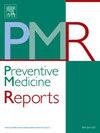Sociodemographic variation in experiences with medication shortages among US adults
IF 2.4
3区 医学
Q2 PUBLIC, ENVIRONMENTAL & OCCUPATIONAL HEALTH
引用次数: 0
Abstract
Objective
To investigate sociodemographic factors associated with prescribed and over-the-counter medication shortage experiences.
Methods
We analyzed repeated cross-sectional data from the 2023 US Census Household Pulse Survey, a nationwide survey of US adults. Outcomes were based on the following question: “In the past month, have you or a member of your household been directly affected by the following?” We created binary indicators based on the following response options: (1) “Shortage of prescription medications, which includes any medicine required or provided by a healthcare provider, pharmacist, or hospital” and (2) “Shortage of over-the-counter medications, encompassing any medication available without a prescription.” Sociodemographic factors included age, gender identity, race/ethnicity, marital status, educational attainment, household income, number of children, employment status, health insurance coverage, at risk for depression/anxiety, disability status, and region. Weighted multivariable models accounted for the complex survey design and estimated adjusted odds ratios with 95 % confidence intervals.
Results
We found that more experiences with prescribed and over-the-counter medication shortages were associated with middle age, transgender/other gender identity, non-Hispanic Other race/ethnicity, higher educational attainment, having at least one child, at risk for depression or anxiety, and being disabled. In contrast, fewer experiences with prescribed and over-the-counter medication shortages were associated with higher household income.
Conclusions
Sociodemographic variation exist in experiences with medication shortages among US adults. These findings underscore the need to bolster the pharmaceutical supply chain to mitigate inequities in medication access.
美国成年人药物短缺经历的社会人口统计学差异
目的探讨与处方药和非处方药短缺相关的社会人口学因素。方法:我们分析了2023年美国人口普查家庭脉搏调查的重复横断面数据,这是一项针对美国成年人的全国性调查。结果基于以下问题:“在过去的一个月里,你或你的家庭成员是否受到以下直接影响?”我们根据以下回答选项创建了二元指标:(1)“处方药短缺,包括医疗保健提供者、药剂师或医院要求或提供的任何药物”和(2)“非处方药短缺,包括任何无需处方即可获得的药物”。社会人口因素包括年龄、性别认同、种族/民族、婚姻状况、受教育程度、家庭收入、子女人数、就业状况、医疗保险覆盖面、抑郁/焦虑风险、残疾状况和地区。加权多变量模型解释了复杂的调查设计,估计调整后的优势比为95%的置信区间。结果我们发现,处方药和非处方药短缺的经历与中年、跨性别/其他性别认同、非西班牙裔其他种族/民族、较高的受教育程度、至少有一个孩子、有抑郁或焦虑风险以及残疾有关。相比之下,较少的处方药和非处方药短缺经历与较高的家庭收入有关。结论美国成人药物短缺经历存在社会人口统计学差异。这些发现强调需要加强药品供应链,以减轻药物获取方面的不公平现象。
本文章由计算机程序翻译,如有差异,请以英文原文为准。
求助全文
约1分钟内获得全文
求助全文
来源期刊

Preventive Medicine Reports
Medicine-Public Health, Environmental and Occupational Health
CiteScore
3.90
自引率
0.00%
发文量
353
 求助内容:
求助内容: 应助结果提醒方式:
应助结果提醒方式:


